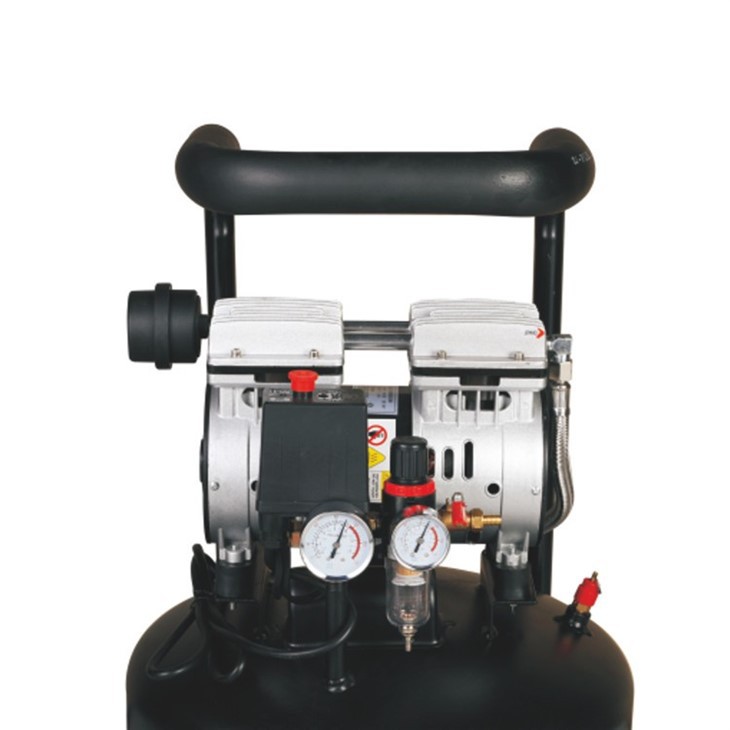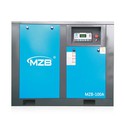Hey there! As a supplier of oil-free portable air compressors, I'm super stoked to break down the different parts of these nifty machines with you. Oil-free portable air compressors are a game-changer in many industries, offering a clean, efficient, and hassle-free way to get the job done. So, let's dive right in and take a look at what makes these compressors tick.
The Compressor Pump
The heart and soul of any air compressor is the compressor pump. This is where the magic happens. The pump takes in air from the surrounding environment and compresses it to a higher pressure. In an oil-free portable air compressor, the pump is designed to operate without the need for lubricating oil. This not only makes the compressor more environmentally friendly but also reduces maintenance requirements.
There are different types of compressor pumps used in oil-free portable air compressors, including reciprocating and rotary screw pumps. Reciprocating pumps use a piston and cylinder arrangement to compress the air. They're known for their simplicity and reliability, making them a popular choice for many applications. Rotary screw pumps, on the other hand, use two interlocking screws to compress the air. They're more efficient and can deliver a continuous flow of compressed air, making them ideal for high-demand applications.
The Electric Motor
The electric motor is what powers the compressor pump. It converts electrical energy into mechanical energy, which is then used to drive the pump. When choosing an oil-free portable air compressor, it's important to consider the power of the electric motor. A more powerful motor will be able to drive the pump more efficiently, resulting in higher air pressure and flow rates.
Most oil-free portable air compressors come with a single-phase electric motor, which is suitable for residential and light commercial applications. However, for heavy-duty applications, a three-phase electric motor may be required. Three-phase motors are more powerful and efficient, but they also require a special electrical supply.
The Air Tank
The air tank is where the compressed air is stored. It acts as a buffer, allowing the compressor to run intermittently and providing a reserve of compressed air for when it's needed. The size of the air tank will depend on the application. A larger air tank will be able to store more compressed air, which means the compressor can run less frequently and for shorter periods of time.
When choosing an oil-free portable air compressor, it's important to consider the capacity of the air tank. A larger capacity air tank will be able to provide a longer continuous supply of compressed air, which is ideal for applications that require a high volume of compressed air, such as sandblasting or painting.
The Pressure Switch
The pressure switch is an important safety feature of an oil-free portable air compressor. It monitors the pressure in the air tank and automatically shuts off the compressor when the pressure reaches a pre-set level. This prevents the compressor from over-pressurizing the air tank, which could lead to a dangerous situation.
The pressure switch also controls when the compressor starts up again. When the pressure in the air tank drops below a certain level, the pressure switch will activate the compressor, allowing it to refill the tank with compressed air.
The Air Filter
The air filter is responsible for removing dirt, dust, and other contaminants from the air before it enters the compressor pump. This helps to protect the pump from damage and ensures that the compressed air is clean and free of impurities.
Most oil-free portable air compressors come with a replaceable air filter. It's important to regularly check and replace the air filter to ensure that it's working effectively. A dirty or clogged air filter can reduce the efficiency of the compressor and increase the risk of damage to the pump.


The Regulator
The regulator is used to control the pressure of the compressed air that is delivered to the tools or equipment. It allows you to adjust the pressure to suit the specific requirements of the application. For example, if you're using a pneumatic nail gun, you'll need to set the regulator to a lower pressure than if you're using a sandblaster.
The regulator is typically located on the air outlet of the compressor. It's important to set the regulator correctly to ensure that the tools or equipment are operating safely and efficiently.
Other Components
In addition to the main components mentioned above, oil-free portable air compressors may also include other components, such as a pressure gauge, a safety valve, and a drain valve.
The pressure gauge is used to monitor the pressure in the air tank. It allows you to keep an eye on the pressure and ensure that it's within the safe operating range. The safety valve is a fail-safe device that releases the pressure in the air tank if it exceeds a certain level. This helps to prevent the tank from exploding in the event of a malfunction. The drain valve is used to remove any moisture that has accumulated in the air tank. Moisture can cause corrosion and damage to the tank and the compressor components, so it's important to drain the tank regularly.
Conclusion
So, there you have it - the different parts of an oil-free portable air compressor. Each component plays a crucial role in the operation of the compressor, and understanding how they work together can help you choose the right compressor for your needs.
If you're in the market for an oil-free portable air compressor, I'd highly recommend checking out our 8 Bar High Pressure Oil Free Air Compressor and 3 Cylinder Oil Free Air Compressor. These compressors are designed to provide reliable and efficient performance, and they come with a range of features to make your job easier.
If you have any questions or would like to discuss your specific requirements, please don't hesitate to get in touch. We're here to help you find the perfect oil-free portable air compressor for your needs.
References
- Compressed Air Systems Handbook
- Air Compressor Manufacturer's Manuals






